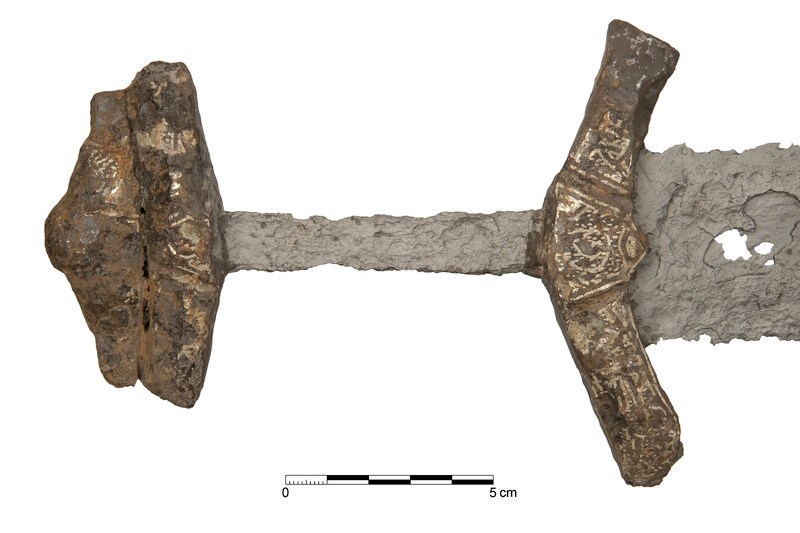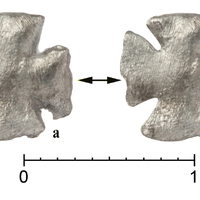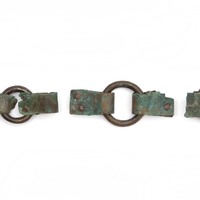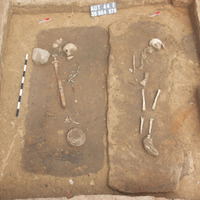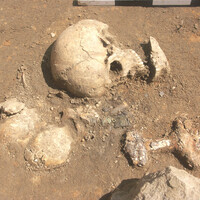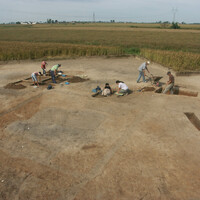Bodzia cemetery
Date:
Tenth and eleventh centuries
Location or Findspot (Modern-Day Country):
Poland
Description:
A cemetery discovered in Bodzia (central Poland) was the burial site of Slavic, nomadic Khazarian, and Scandinavian elites rather than individuals who were local to the region. An iron sword with silver inlay on the hilt, likely from the late tenth or early eleventh century, was discovered in the grave of an adult male (20–30 years old). It may originally have been suspended from his shoulder and was most likely a ceremonial weapon rather than one designed for use. The style of the sword suggests it was Scandinavian in origin. The same warrior had a belt with bronze fittings.
Ten graves had decorative glass beads from Byzantine and Islamicate workshops. The blue beads shown here have light-green diamond motifs and are made by the winding technique: molten glass or glass bands were wound around a metal rod. They were in the grave of an adult woman (35–45 years old), along with a fragment of a comb made of antler and an iron knife.
Among the grave goods were tenth- and eleventh-century coins from different locations, including a Samanid dirham and different coins from Normandy, Saxony, Franconia, and Bohemia. A Saxon denier cut into the shape of a cross was found near mandible bones, suggesting it was originally in the mouth of the deceased. The various origins of coins in Bodzia graves reflects the location of this cemetery on important river trade routes that connected the Baltic Sea with Byzantium.
Ten graves had decorative glass beads from Byzantine and Islamicate workshops. The blue beads shown here have light-green diamond motifs and are made by the winding technique: molten glass or glass bands were wound around a metal rod. They were in the grave of an adult woman (35–45 years old), along with a fragment of a comb made of antler and an iron knife.
Among the grave goods were tenth- and eleventh-century coins from different locations, including a Samanid dirham and different coins from Normandy, Saxony, Franconia, and Bohemia. A Saxon denier cut into the shape of a cross was found near mandible bones, suggesting it was originally in the mouth of the deceased. The various origins of coins in Bodzia graves reflects the location of this cemetery on important river trade routes that connected the Baltic Sea with Byzantium.
Relevant Textbook Chapter(s):
6
Image Credits:
All photos provided by the Institute of Archeology and Ethnology of the Polish Academy of Sciences, and are the result of research carried out by them
